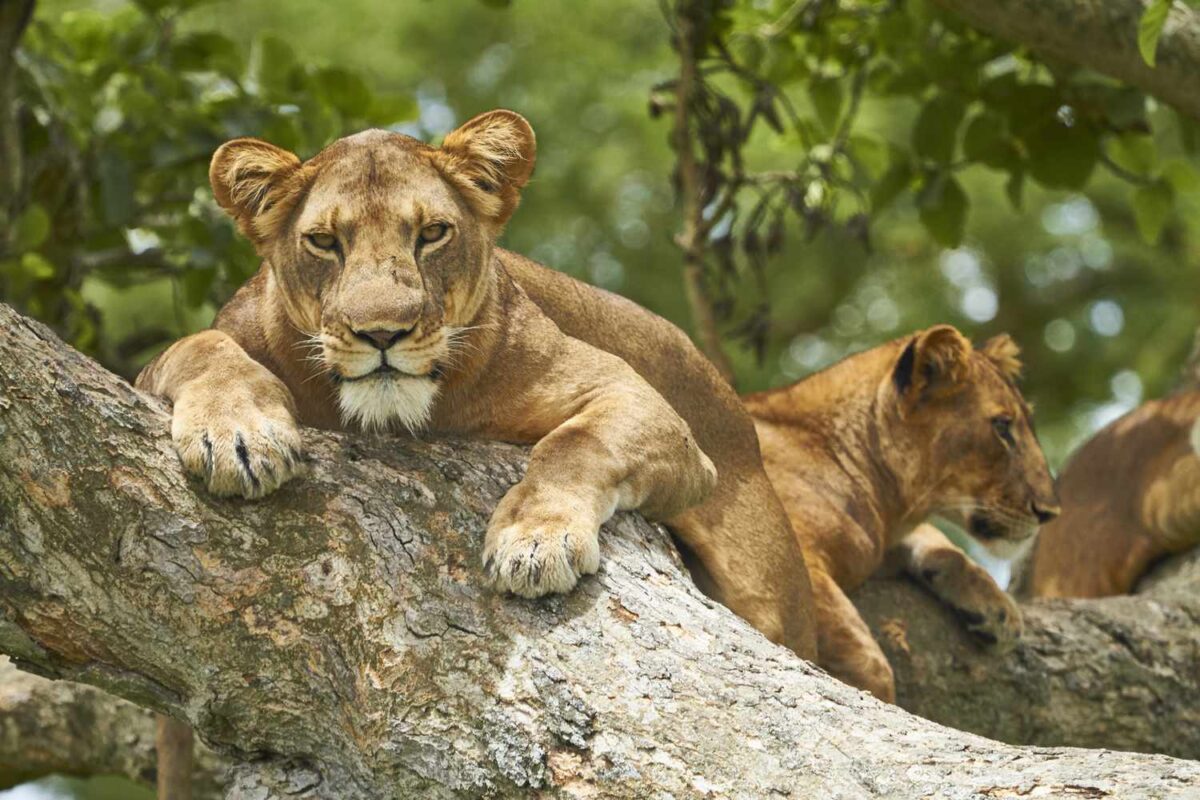Queen Elizabeth National Park is one of Uganda’s most celebrated protected areas—a vast mosaic of ecosystems that spans savannahs, forests, and water channels. Located in the western region of Uganda, this park offers visitors a mesmerizing blend of dramatic landscapes, abundant wildlife, and fascinating cultural history, making it a must-see destination for any African safari adventure.

Location, Geography, and Scenic Landscapes
Spanning approximately 1,978 km² (764 square miles), Queen Elizabeth National Park is situated in western Uganda and straddles several districts including Kasese, Kamwenge, Rubirizi, and Rukungiri. The park’s geography is both varied and dramatic. Iconic features include the mighty Kazinga Channel, a natural waterway that links Lake George and Lake Edward while providing a vital corridor for wildlife. The park forms part of an extensive network of protected areas, bordering reserves and even neighboring protected areas across the border in the Democratic Republic of the Congo.
On the floor of the Albertine Rift Valley, the park features open savannah grasslands, thick forests, and crater lakes, all accentuated by the gentle backdrop of distant mountain ranges such as the Rwenzori. These diverse habitats create a dynamic environment where nature’s raw beauty is on full display.
A Rich Tapestry of History and Cultural Heritage
Queen Elizabeth National Park carries a deep historical and cultural legacy. Originally established in 1952 as Kazinga National Park, it was renamed just two years later in honor of Queen Elizabeth II’s visit—a change that underscored its international significance. The region’s history, marked by colonial influences and subsequent developments, is interwoven with the traditions of local communities such as the Basongora. These communities have long coexisted with the park’s wildlife and continue to maintain cultural practices that add depth to the visitor experience. Today, cultural tours and community interactions offer insights into how local people have adapted to life on the fringes of this remarkable wilderness.
Abundant Wildlife and Unforgettable Safari Experiences
Queen Elizabeth National Park is renowned for its extraordinary biodiversity, making it one of the top wildlife destinations in East Africa. Some key highlights include:
- Tree-Climbing Lions: The park is famously home to the rare tree-climbing lions of the Ishasha sector. These lions are known to rest in fig trees—a behavior that fascinates visitors and sets this park apart from others.
- The Kazinga Channel Boat Cruises: One of the most popular safari experiences in the park is a boat cruise along the Kazinga Channel. As you glide through calm waters, you can enjoy close-up views of large herds of buffalo, hippos, elephants, and countless aquatic birds.
- Diverse Mammals and Birds: Home to about 95 mammal species and over 600 species of birds, Queen Elizabeth offers unmatched opportunities for wildlife enthusiasts. From elephants and leopards to antelopes and among the best bird-watching in Uganda, every game drive reveals something new.
- Varied Landscapes: Whether you’re exploring open grasslands, dense woodlands, or the unique crater lakes and wetlands, every habitat in Queen Elizabeth has its own unique story to tell.
Each safari activity is designed to immerse you in the heart of Africa’s wilderness, offering unforgettable moments and close encounters with nature.
Conservation, Eco-Tourism, and Community Engagement
Managed by the Ugandan Wildlife Authority, Queen Elizabeth National Park is a flagship example of both conservation and eco-tourism. Rigorous efforts are in place to protect endangered species and balance tourism with environmental sustainability. Local community initiatives—especially among the Basongora and other neighboring groups—involve education, sustainable resource management, and active participation in conservation projects. Visiting the park not only provides an extraordinary wildlife experience but also supports initiatives aimed at preserving Uganda’s natural heritage for future generations.
Practical Tips for Your Queen Elizabeth Safari
To make the most of your adventure in Queen Elizabeth National Park, consider these useful tips:
- Best Time to Visit: The dry seasons—from December to February and June to August—typically provide optimal wildlife viewing conditions, fewer mosquitoes, and easier access to park roads.
- What to Pack: Lightweight, neutral clothing, a wide-brimmed hat, sunscreen, insect repellent, and sturdy binoculars are essential. Don’t forget a camera to capture the breathtaking vistas and unexpected wildlife encounters.
- Getting There: Queen Elizabeth is accessible by road from Kampala via Masindi. Although the roads can be rough, the scenic journey through rural Uganda is an adventure in itself. Hiring a 4×4 vehicle and an experienced local guide is highly recommended.
- Local Guides: Expert guides not only enhance your safety but also deepen your understanding of the park’s wildlife and cultural history, ensuring a richer safari experience.
A Call to Adventure
Queen Elizabeth National Park is not just a destination—it’s an invitation to witness the untamed splendor of Uganda. Whether you’re drawn by the allure of the tree-climbing lions, the serene Kazinga Channel, or the vibrant mosaic of wildlife and landscapes, every moment in the park is infused with wonder. Embrace this opportunity to explore one of Africa’s most iconic national parks and create memories that will last a lifetime.
Additional Insights: For wildlife photographers and nature enthusiasts, consider joining specialized safari tours or photography workshops available in the park. These immersive experiences not only offer unique access to the park’s hidden treasures but also contribute to sustainable conservation practices that help preserve Uganda’s natural heritage.
Happy exploring and safe travels on your Queen Elizabeth adventure!





